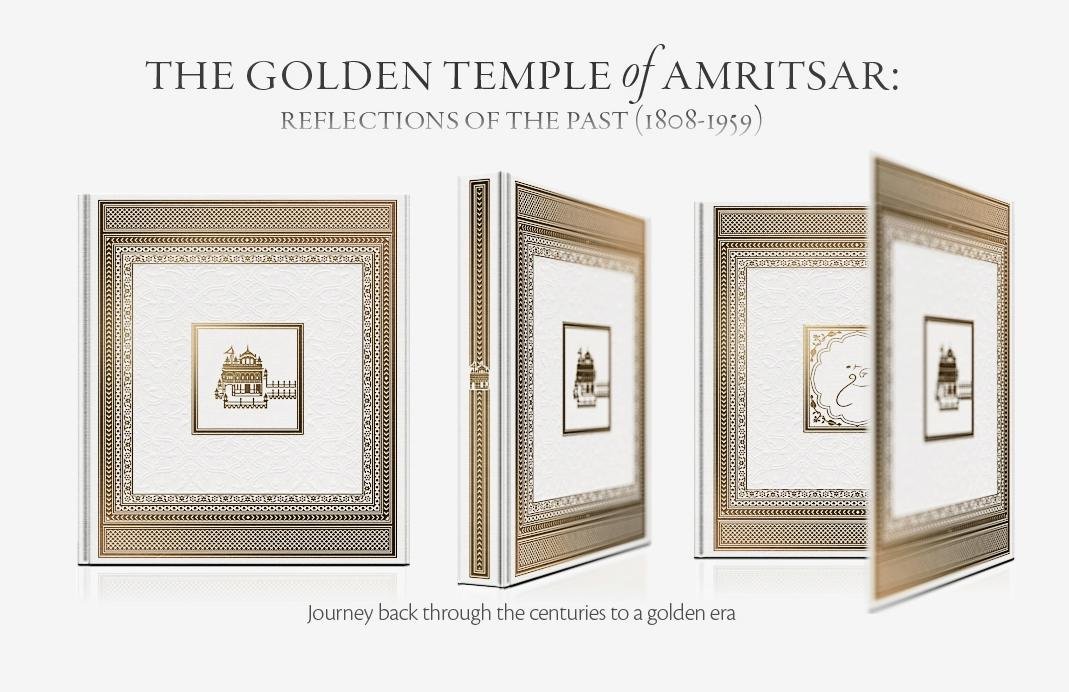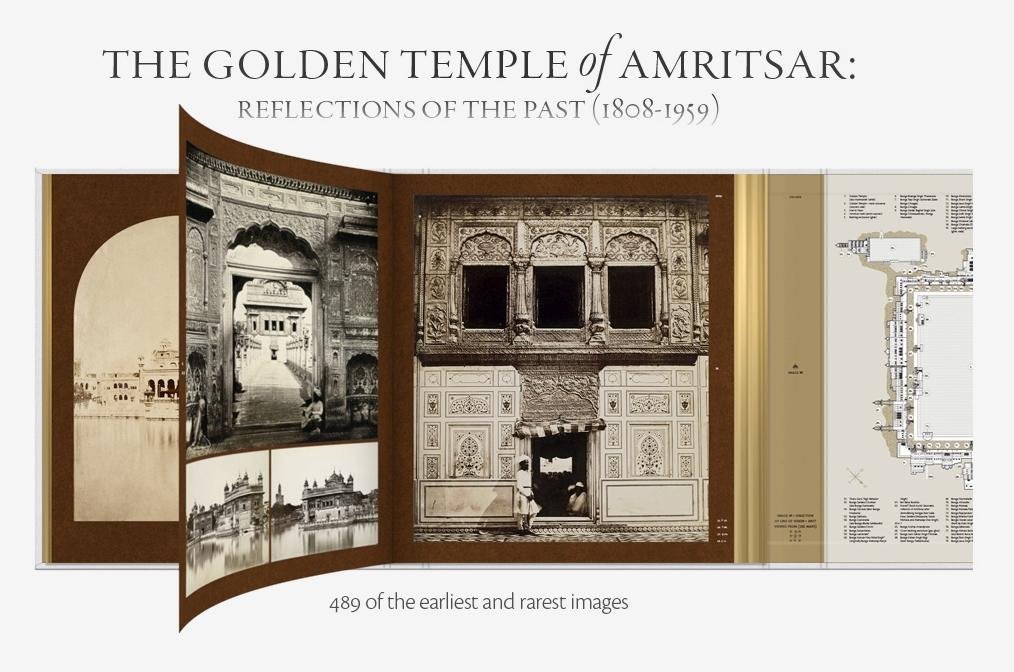Those privileged to get hold of one of the remaining limited first edition copies (most were pre-sold to fund its production) of this exquisite tome will probably treat it with similar reverence and respect perhaps to that given to the very first illuminated books over a thousand years ago. You don't even open this book conventionally: it reveals itself as you first lift one cover then the other. The symbolic presentation recreates the underlying values and openness of its subject, the Golden Temple, the heartbeat of the Sikh way of life.
The exploration of the pages of illustrations, written accounts by early visitors, and detailed, short descriptions mimics my experience on my first visit there over 16 years ago. Then there was no guide book available to tell me what was what, why it was significant, what the stories were. Instead I learned by observing the people, filled with love and devotion which permeate the white marble walkways, the tank of sacred water, and the gold encrusted marble temple
I realised that the whole Golden Temple complex is a manifestation, an expression in matter, of the substance of the visitors' prayers, gathered over the ages. Just by being in it, it changes the substance of who you are, how you approach life. There is a subtlety beyond description, a beauty which could not have been inspired by anything other than something greater than a human.To capture that essence on paper, keeping the delicacy and intensity of the actual place itself, is undoubtedly a challenge. How easily the authors and designer could have fallen into dreary, turgid history, trite flippant handling of images and bad judgement, or reproduction. Instead they have sparked the imagination of a way of approaching a place and a book - and perhaps your life itself - with a lightness of touch. The authors have diligently collated information from so many different sources over the last twenty years or so, to produce a definitive pictorial and eye witness record in an accessible manner relevant to far more than just the Sikh devotee or tourist.
The text reminds me of those wonderful early Elizabeth David recipe books which shaped a whole generation with a love of French and Mediterranean food
They were about so much more than food: they sung of a culture, which saw us approach ingredients lurking in the kitchen in a new light. Why do boring boiled mashed potatoes when with a little je-ne-sais-quoi the humble spud could be transformed into something as delicious as pommes dauphinoise? What got you to change that old habit? Inspiration.The stories, both the written ones and the ones etched on all the faces in the pictures, tell of how comfortable everyone is here, that this is a place where all are welcome and there's never anyone who looks out of place, be it a turbaned warrior or a curious visitor.
Looking through these illustrations, from lithographs to photographs, line-drawings to watercolours, is like coming across a treasured family photo album in the attic. We see solemnity without sadness, humanity without excessive piety; how the buildings grew and developed, how the fabric of life here was sustained on an unbroken thread of daily devotion and exultation.
There are two images in this book which I return to again and again, both of which capture that extraordinary intimacy, simplicity and unseen beauty of devotion inside. One is a highly sensitive watercolour of a man reading the Siri Guru Granth Sahib, the book which Sikhs consider as a living guru, the other is a photograph a century or so later of the same scene. How easily I can imagine sitting with them quietly enjoying the scene unfolding around us, even though the Golden Temple now welcomes more people each year than the Taj Mahal, making it awash with prayers.
The Golden Temple is notoriously difficult to photograph and paint. No one view, no one time of day, no one season seems to be the quintessential moment to freeze in time. By exploring the panoply of visual representations from all sorts of different perspectives, you can almost get the same experience as you do by actually being there when you walk around, and around, and around, absorbing the sound of the ethereal music and pilgrims' prayers. This book reminds me of all those impressionist paintings of Rouen Cathedral by Monet, which he painted at different times of day, over the course of a few years. I feel I got to know the sacredness of that cathedral through his acute observation and presence far better than by going on a short guided tour and gawping in awe at the façade en route somewhere else.
What I've so enjoyed in spending time in this new guide book, and I choose those words very consciously, is that so many of the aspects which lured me to deep meditation in the building and complex are here to discover too: the extraordinary patterns on the white marble walkways to evoke the mind into new ways of thinking; the intricate regal décor inside; the eyes of the people, filled with devotion, relief, joy or pain; the common understanding that none of this is personal, everything belongs to God, to all. I've even found the sounds of prayerful feet, the breeze and the clanking of metal buckets echoing around my mind as I turn the page.
When I first came to the Golden Temple I was seeking something, a reflection on life. Approach this book similarly and see where it leads you. Of course, every Sikh household has a print of the Golden Temple, and probably a few will now have this rare edition, but it's absolutely not just for those who already know the place. This is a book like no other which gives you a 360 degree perspective, unfolded over 200 years, of a sacred place on earth which to this day lives with the sound of prayers 24/7. I wonder if you will not get to know and experience it as well by walking through these pages as by going there. It opens up a whole new world beyond words. You make it what it is.



